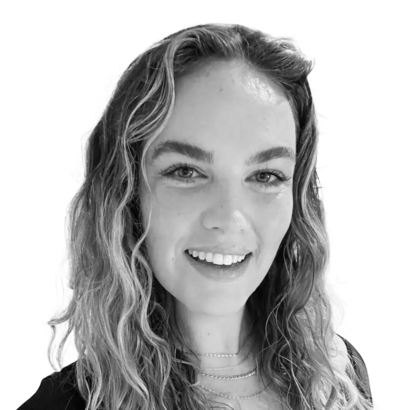Those who venture to dive bars in stylish New York neighborhoods such as Ridgewood, in Queens, and Bushwick, in Brooklyn, on a Thursday night may notice something out of the ordinary: the Gen Z It Girls look unfiltered.
Just a few years ago, young women tended toward the opposite: tightly frozen and noticeably filled faces. But now, turned off by the ubiquitous Instagram Face associated with millennials, Gen Z–ers are trapped in a paradox. They want to look their best and stave off aging without winding up looking plastic.
A recent poll by Newsweek and Redfield & Wilton Strategies found that nearly 40 percent of Gen Z participants believe that cosmetic surgery makes one look “less attractive.” The study concludes that this generation appears to have a “natural-is-best” preference, but that argument misunderstands a generation raised on TikTok. This younger group has a natural-looking-is-best preference. They’re prepared to get injectables when the time is right, but they want a particular result. That nuance, that small distinction, is significant.
The evidence is in the reference photos—or lack thereof. “In years past [younger patients] would bring in a photo of a celebrity and say, ‘I want to look like that,’” says Dr. Georgina Ferzli, a board-certified dermatologist in New York City. “That isn’t happening.” Now the approach is: Don’t make me look like that. Riley, a 23-year-old paralegal who lives in Clinton Hill, Brooklyn, says she has seen “all different iterations of lip filler”—from the Kylie Jenner variety to today’s only slightly bee-stung aesthetic—through her friends and acquaintances at Barnard College.
Among a certain subset of wealthy women, the non-intervention look has always been in vogue, but many millennials over the past decade have rejected that. “[Dermatologists are] still paying for this scary aesthetic,” says Dr. Rachel Nazarian, a board-certified dermatologist in New York City. Their appointments often begin with a reassurance that the results will be subtle.
Leila, a 24-year-old who works in foundational development and lives in Greenwich Village, says her age group calls it “blindness,” as in you are blind to how obvious—and according to some, over-the-top—your filler looks. “It was getting really out of control,” she concludes. It’s that extensive use of filler that is really falling out of favor.
Consider, too, new studies that have found that filler may last longer than initially thought. Especially on social-media platforms, users are posting all sorts of anecdotes about filler migrating to different areas of the face.
But Nazarian explains neither is a major cause for concern. “Filler is not migrating the way everyone is thinking it is,” she says. “You may get a subtle movement if it’s not placed correctly, but it is not moving.” And what about its unexpected longevity? “Some people metabolize [filler] slower.” Regardless of validity, patients are bringing up both concerns to her.
Nazarian’s patients are at least TikTok-educated on the realities of injectables. Riley, for one, explains that videos on social media have taught her what the worst-case scenario can look like. “Filler does make you look older,” she says, referencing the bounty of TikTok videos inundating her For You page. For instance, a TikTok featuring Dr. Daniel Barrett, a plastic surgeon based in Beverly Hills, went viral after he incorrectly guessed the age of the cast members of Love Island USA. One of the most egregious misses? He estimated that one was 14 years older.
Although Botox and filler are used interchangeably to describe that look of excess, they’re not the same. Botox causes a temporary paralysis of the muscles, which keeps them from forming wrinkles and furrows. Filler is a gel-like structure generally comprising hyaluronic acid. “[Filler] should only go where you’ve lost volume. It’s not meant to restructure,” explains Ferzli. Lip filler, for example, should ideally be used to refresh the volume we all naturally lose in our lips with age.
The prevailing wisdom among dermatologists is that early Botox is at least one drop in the fountain of youth. The reality, though, is a bit more complicated than just getting Botox early and often. Dr. Samer Jaber, a board-certified dermatologist in New York City, explains what exactly preventative Botox means. “You want to prevent your lines from getting deep and etched in your skin—you just need to be softer.” Few patients request the fully frozen look. “I advise my clients to get Botox every six months at the most,” says Ferzli. “Your muscles need time to move, or they’ll atrophy, and you will look older.” Those few months of movement are not enough to cause deep, static lines.
Gen Z’s nuanced approach to cosmetic procedure means they still may ask for lip filler, but in barely perceptible amounts. “Lip filler is still really popular, but more and more people are choosing to do a half-syringe,” says Jaber. He has recently fielded more requests for a new frontier: jaw filler. A cut jawline has become a new beauty standard on, yes, TikTok. Perhaps the urge for a more modified approach to injectables has just shifted the emphasis from one part of the face to another.
Lydia, a 25-year-old from Connecticut who works in tech, says she isn’t ready for preventive injections yet, but she knows the day is coming. “I wouldn’t be surprised if I had Botox by, like, 28.”
Hannah Holland is the literary editor and a podcast contributor to the Velshi Banned Book Club on MSNBC, a producer for Velshi, and a writer for MSNBC Daily. Holland has written for The Washington Post and Bloomberg News





